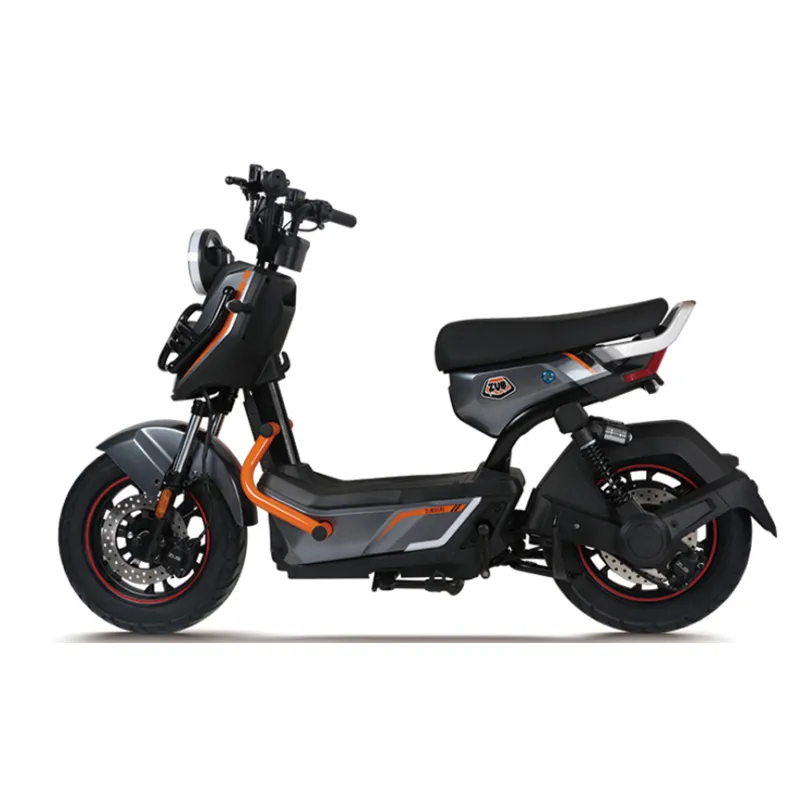The Rise of Electric Bikes as Urban Transportation Revolution
As cities grow more congested and environmental concerns take center stage, electric bikes are emerging as a groundbreaking solution to modern transportation challenges. These innovative vehicles combine the simplicity of traditional bicycles with the power of electric propulsion, creating an efficient and sustainable way to navigate urban landscapes. The growing popularity of electric bikes reflects a fundamental shift in how people think about daily commuting and personal transportation.
The transformation of urban mobility has never been more apparent than it is today. Electric bikes represent more than just a trend - they symbolize a practical response to rising fuel costs, parking difficulties, and increasing environmental awareness. As we delve deeper into this transportation revolution, we'll explore why more people are choosing electric bikes over conventional vehicles.
Environmental Benefits of Electric Bike Adoption
Carbon Footprint Reduction
Electric bikes stand out as an environmentally conscious choice, producing significantly fewer emissions compared to cars. While a typical passenger vehicle emits about 4.6 metric tons of carbon dioxide annually, electric bikes generate minimal emissions, mainly from the electricity used for charging. This substantial difference in environmental impact makes electric bikes an attractive option for environmentally conscious commuters.
The manufacturing process of electric bikes also requires fewer resources compared to cars, resulting in a lower overall environmental footprint. From production to end-of-life disposal, electric bikes maintain a significantly smaller ecological impact throughout their lifecycle.
Sustainable Urban Development
Cities implementing electric bike infrastructure contribute to more sustainable urban development. Dedicated bike lanes, charging stations, and bike-sharing programs create a framework for reduced traffic congestion and improved air quality. These initiatives transform urban spaces into more livable environments while supporting the growing community of electric bike users.
The adoption of electric bikes also reduces the demand for parking spaces, allowing cities to repurpose land for green spaces, pedestrian zones, and community facilities. This transformation helps create more vibrant, people-centered urban environments.

Economic Advantages of Electric Bike Ownership
Cost Savings Over Time
The financial benefits of choosing electric bikes over cars are substantial and multifaceted. Initial purchase costs for electric bikes typically range from $1,000 to $4,000, significantly less than even the most affordable new cars. Operating costs are equally favorable, with electricity costs for charging amounting to mere pennies per mile compared to rising fuel prices for cars.
Maintenance costs for electric bikes are also considerably lower than those for cars. Regular maintenance typically involves basic tasks like tire changes, brake adjustments, and battery care, which can often be performed at home or at local bike shops for modest fees. Insurance costs are minimal or non-existent for electric bikes, providing additional long-term savings.
Reduced Transportation Expenses
Electric bike owners avoid numerous costs associated with car ownership, including parking fees, toll charges, and expensive maintenance services. The elimination of these recurring expenses can result in substantial annual savings. Additionally, electric bikes don't require registration fees or expensive license renewals, further reducing the financial burden of transportation.
For urban dwellers, the switch to electric bikes can eliminate the need for a second car, leading to significant household savings. This financial advantage becomes particularly apparent when considering the rising costs of car ownership in urban areas.
Health and Lifestyle Benefits
Physical Well-being Improvements
Electric bikes offer an excellent balance between exercise and assisted transportation. While the electric motor provides support when needed, riders still engage in physical activity, promoting cardiovascular health and muscle strength. This combination makes electric bikes particularly attractive for those seeking to incorporate more activity into their daily routines without overexertion.
Studies have shown that electric bike users tend to ride more frequently and for longer distances than traditional cyclists, leading to consistent exercise habits. The assisted pedaling feature allows riders to tackle challenging terrain and longer distances while still maintaining an active lifestyle.
Mental Health Advantages
The psychological benefits of riding electric bikes are equally impressive. Regular outdoor activity, exposure to nature, and the freedom of personal mobility contribute to reduced stress levels and improved mental well-being. Commuting by electric bike often proves less stressful than dealing with traffic congestion and parking challenges in cars.
The sense of community among electric bike riders and the satisfaction of contributing to environmental conservation also enhance overall life satisfaction. Many riders report improved mood and reduced anxiety after switching from car commuting to electric bike transportation.
Practical Advantages in Urban Settings
Navigation and Parking Solutions
Electric bikes excel in urban environments where cars often struggle. Their compact size allows riders to navigate through traffic congestion efficiently, often reaching destinations faster than cars during peak hours. The ability to use bike lanes and shortcuts unavailable to cars provides additional time-saving benefits.
Parking becomes a non-issue with electric bikes, as they can be secured in bike racks or dedicated parking areas that take up minimal space. This convenience eliminates the time and stress associated with finding parking in busy urban areas, while also reducing transportation costs.
Versatility and Accessibility
Modern electric bikes offer impressive versatility, suitable for various purposes from commuting to shopping trips. Many models feature cargo capacity for groceries or work equipment, while remaining manageable in size and weight. The electric assist makes it possible to arrive at destinations without breaking a sweat, making electric bikes practical for professional settings.
The accessibility of electric bikes extends to diverse age groups and fitness levels. The adjustable assist levels allow riders to customize their experience based on their needs and capabilities, making sustainable transportation available to a broader population.
Future Outlook and Technology Advancements
Innovation in Electric Bike Technology
The electric bike industry continues to evolve with technological improvements in battery life, motor efficiency, and smart features. New developments in battery technology promise longer ranges and faster charging times, while advanced motor systems provide smoother and more powerful assistance. Integration with smartphone apps and GPS systems enhances the riding experience with navigation and performance tracking capabilities.
Emerging technologies like regenerative braking and solar charging options suggest even greater efficiency improvements in future electric bike models. These innovations will further strengthen the position of electric bikes as a practical alternative to cars.
Infrastructure Development
Cities worldwide are increasingly investing in infrastructure to support electric bike adoption. The expansion of protected bike lanes, secure parking facilities, and charging stations creates a more comprehensive ecosystem for electric bike users. This growing infrastructure network makes the transition from cars to electric bikes more viable for a larger portion of the population.
Public-private partnerships are driving the development of smart city solutions that integrate electric bikes into broader transportation networks. These initiatives promise to make electric bike commuting even more convenient and accessible in the future.
Frequently Asked Questions
How far can electric bikes typically travel on a single charge?
Electric bikes generally have a range of 20-80 miles on a single charge, depending on factors such as battery capacity, terrain, rider weight, and level of pedal assistance used. Many modern models feature removable batteries that can be easily charged at home or work, and some bikes offer the option to carry spare batteries for extended range.
Are electric bikes safe to ride in various weather conditions?
Electric bikes are designed to operate safely in most weather conditions, featuring water-resistant electrical components and reliable braking systems. However, riders should take extra precautions during wet or icy conditions, such as reducing speed and increasing following distances. Regular maintenance and appropriate tire selection for seasonal conditions help ensure safe operation year-round.
What maintenance is required for electric bikes?
Electric bikes require similar basic maintenance to traditional bicycles, including regular tire pressure checks, chain lubrication, and brake adjustments. Additional maintenance specific to electric components includes battery care and occasional motor system diagnostics. Most maintenance tasks can be performed at home, though annual professional servicing is recommended for optimal performance and longevity.

